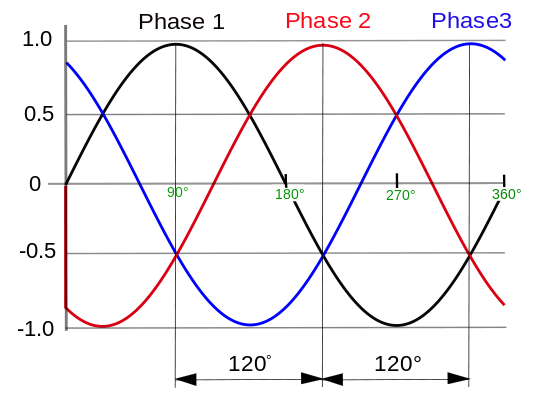3-Phase Power — Wye It Matters
Editor’s Note: This blog was originally posted on Oct. 31, 2013. As of June 20, 2019, it has been updated to include additional relevant links, more information about 3-phase power, 3-phase wiring and 3-phase Wye – and why 3-phase Wye is being used in data centers.
There are many compelling reasons to use 3-phase power in your data center. It allows utilities to deliver more power to you over smaller, less expensive wires as compared to a single-phase power system. Utilizing 3-phase power also makes it possible to carry more load because it combines three alternating currents that vary by 120 degrees in phase (this keeps the power from ever dropping to zero).
When it comes to powering data centers, 3-phase Wye (a type of 3-phase power) specifically is growing in popularity. Here’s “why” 3-phase Wye shouldn’t be overlooked.
Why 3-Phase Power?
To understand power in data centers, you need to first be able to identify the differences between single-phase and 3-phase power distribution.
Most residential buildings (single-family homes) are wired with single-phase electric power, which uses one AC voltage delivered over two hot wires and one neutral wire. The voltage across the two hot wires measures 240VAC (for devices like an oven or dryer); across any hot-to-neutral voltage measures 120VAC (for everything else).
Most commercial businesses, on the other hand, are wired with 3-phase electric power, which consists of three AC voltages separated from each other by 120 electrical degrees (or one-third of a cycle). These systems deliver power over three hot wires; the voltage across any two hot wires measures 208VAC. The power load is the same at any instant because of the three single-phase circuits that consistently deliver power (look at the waveform below for a visual representation of this idea).

Because of its consistent load, 3-phase power is ideal for motors, eliminating the need for starting capacitors. It also allows for smaller wires (this means less copper, which translates to cheaper installation and fewer materials needed) and lower (safer) voltages for the same power transmission as single-phase power.
Why 3-Phase Wye?
There are two types of circuits used to maintain equal load across the three hot wires in a 3-phase power system: Let’s compare Delta vs. Wye.
The Delta configuration has the three phases connected like a triangle. Delta systems have four wires total: three hot wires and one ground wire.
Wye systems utilize a star configuration, with all three hot wires connected at a single neutral point. One neutral wire and one ground wire make for a total of five wires in 3-phase Wye systems.
When comparing Delta vs. Wye systems, both measure 208VAC between any two hot wires, but 3-phase Wye systems also measure 120VAC between any hot wire and neutral wire. In other words, the Wye system’s neutral wire is what allows two different voltages and powers both 3-phase and single-phase devices in the data center.
Don’t Forget About Delta
Delta systems still have their place, mainly used for any large motors or heaters that don’t need a neutral wire. Delta systems are also used in power transmission because it’s expensive to run a fourth neutral wire all those miles.
That’s why distribution transformers are wired as Delta-Wye. This creates the neutral that allows the transformer to deliver power for single-phase loads.
Delta-wired devices can also be fed from a Wye source by simply omitting the neutral wire. In a data center, for example, a Delta power distribution unit (PDU) can be used when there’s only a need for 208VAC; Wye PDUs are used when there’s a need for 120VAC and 208VAC voltages.

3-Phase Wye in the Data Center
Because their power requirements can’t be met with 120VAC, many of today’s large blade servers only accept 208VAC; however, most data centers still need to power 120VAC devices as well. This is why 3-phase Wye power distribution is the best option for today’s growing data centers.
Belden’s wide range of three-phase rack-mounted and vertical PDUs are available in Delta and Wye power configurations to accommodate a broad range of electrical characteristics, outlet requirements, plug and receptacle styles, and remote monitoring and management. Learn more about the data center solutions available from Belden here.
